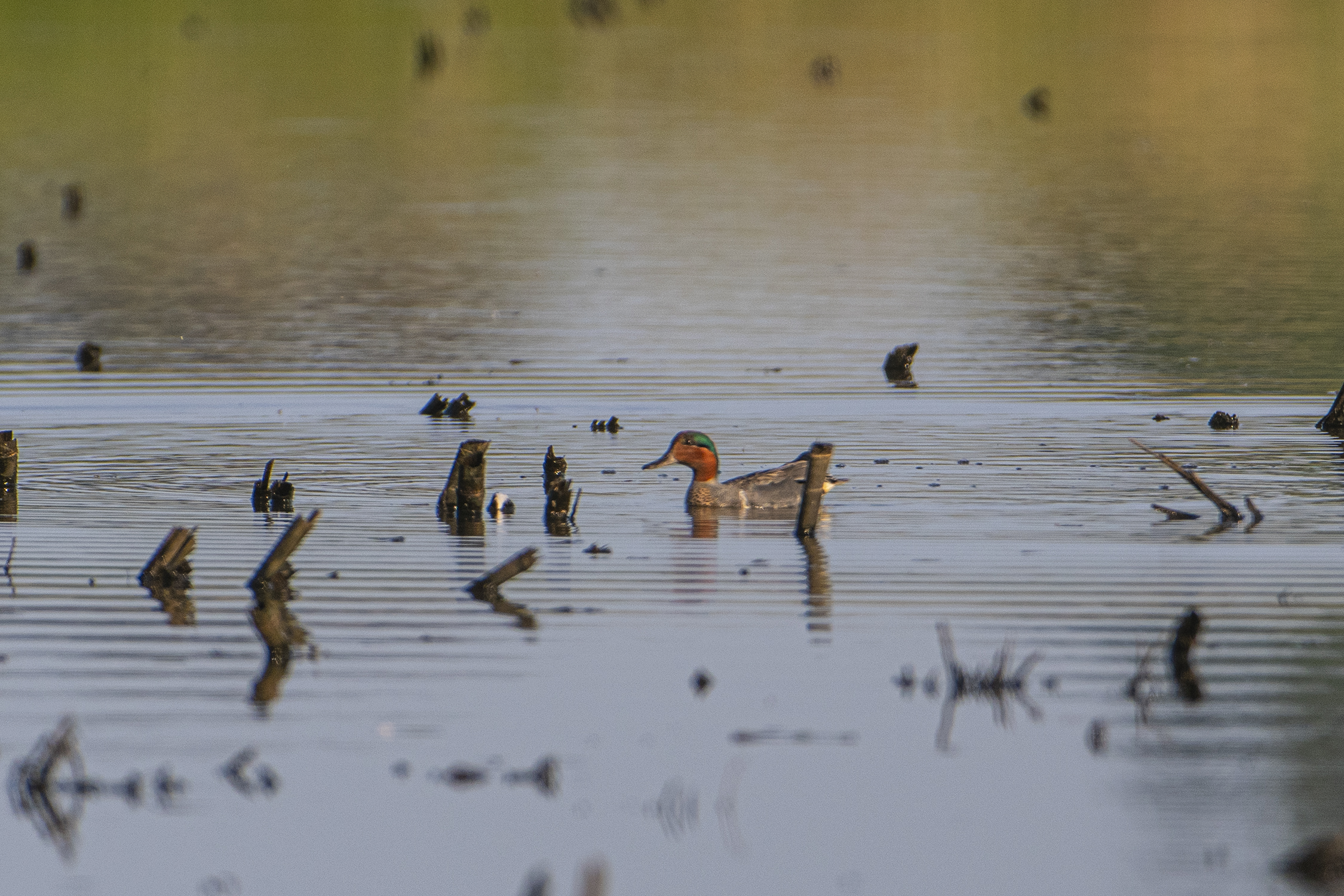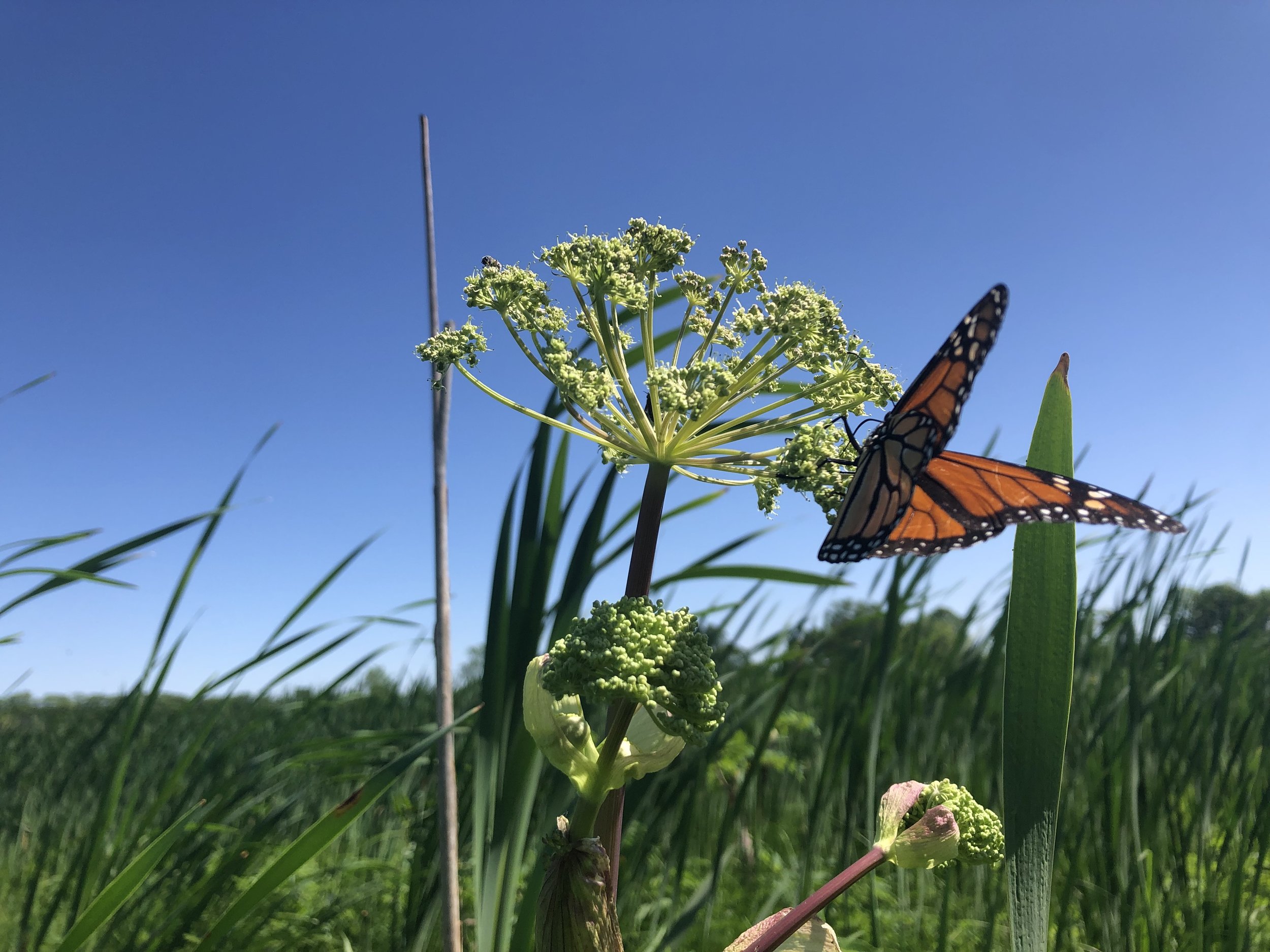Photo by Drew Harry
For this Friday "Fringed" Feature, we spotlight one of our native botanical wonders. Aldo Leopold fought to save the Eastern Prairie White Fringed Orchid at our Faville Grove Sanctuary, and on Thursday, July 11 in the Crawfish River prairie remnants, we surveyed the orchid he eulogized below in his essay, "Exit Orchis". This beautiful wild orchid is a Wisconsin Endangered and Federal Threatened plant, one we're proud to carefully and intentional conserve on our land.
EXIT ORCHIS
By Aldo Leopold
Courtesy of the University of Wisconsin Digital Archives
Wisconsin conservation will suffer a defeat when, at the end of this week, 75 cattle will be turned to pasture on the Faville Grove Prairie, long known to botanists as one of the largest and best remnants of unplowed, ungrazed prairie sod left in the State. In it grows the white ladyslipper, the white fringed orchis, and some twenty other prairie wildflowers which origianlly carpeted half of the southern part of the State, but most of which are now rare due to their inability to withstand cow or plow.
Thirty miles away a C.C.C. camp on the University of Wisconsin Arboretum has been busy for four years artifically replanting a prairie in order that botany classes and the public generally may know what a prairie looked like, and what the word "prairie" signifies in Wisconsin history. This synthetic prairie is costing the taxpayer twenty times as much as what it would have cost to buy the natural remnant at Faville Grove, it will be only a quarter as large, the ultimate survival of its transplanted wildflowers and grasses is uncertain, and it will always be synthetic. Yet no one has heard the appeals of the University Arboretum Committee for funds to buy the Faville Grove Prairie, together with other remnants of rare native flora, and set them aside as historical and educational reservations.
Our educational system is such that white fringed orchis means as little to the modern citizen of Wisconsin as it means to a cow. Indeed it means less, for the cow at least sees something to eat, whereas the citizen sees only three meaningless words. In preparation for the hoped-for floral reservation at Faville Grove, the Botany Department and the Department of Wildlife Management of the University have, during the last three years, mapped the location of each surviving colony of rare flowers, and each spring have counted the blooms. It was hoped to measure against these data the response of the flowers to complete future protection. The data will now serve to measure the rate at which destruction by grazing takes place. It is already known that with the possible exception of ladies tresses, all the rarer species succumb to pasturing. That is why they are rare. Few of them succumb to mowing, hence the past use of the Faville Grove Prairie as haymeadow has not greatly injured its flora.
In my opinion no individual blame attaches to the owner of the Faville Grove Prairie for converting it to pasture. The public taxes him on the land. It is not his obligation to provide the public with free botanical reservations, especially when all public institutions, from the public school to the federal land bank, urge him to squeeze every possible penny out of every possible acre. No public institution ever told him, or any other farmer, that natural resources not convertible into cash have any value to it or to him. The white-fringed orchis is as irrelevant to the cultural and economic system into which he was born as the Taj Mahal or the Mona Lisa.
Photo by Joshua Mayer
John Muir, who grew up amid the prairie flowers in Columbia County, foresaw their impending disappearance from the Wisconsin landscape. In about 1865 he offered to buy from his brother a small part of the meadow of the family homestead, to be fenced and set aside as a floral sanctuary or reservation. His offer was refused. I imagine that his brother feared not so much the loss of a few square rods of pasture as he feared the ridicule of his neighbors.
By 1965, when the rarer prairie flowers are gone, the cultural descendants of John Muir's brother may look at a picture of the legendary white fringed orchis and wish they could see one.
Note: Aldo Leopold was the founder of the science of Wildlife Management and professor of this subject at the University of Wisconsin in Madison. He is now well known as the author of the fundamental text in this field, as well as the lyrical essays collected in "Sand County Almanac." The above appeal, written May 15, 1940, so simple, yet magnificent in its eloquence and emotional in its urgency, was successful in stimulating purchase of a 40-acre piece of Wisconsin prairie. Spared damage from "cow or plow",this small piece of the Faville Prairie has become one of Wisconsin's finest scientific areas. Today, administered through the University of Wisconsin Arboretum, it is useful in research, indispensable in teaching, and unsurpassed for its beauty and biological interest. Leopold was one of the early inspirers and guiding lights of the Arboretum whose own difficult beginnings are documented by Nancy Sachse, 1966 "A thousand Ages."



















